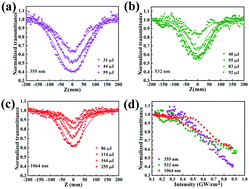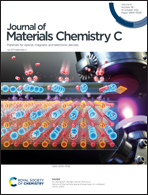Excellent ultraviolet optical limiting properties of 2D chromium nanosheets
Abstract
Chromium (Cr), located in the subgroup VIB of the periodic table of elements, is widely known as the hardest metal in nature with a high polish and high melting point with an atomic number 24. In the past years, researches on the optical nonlinear behaviour of materials mainly focused on the main group elements, and the subgroup elements were rarely reported. In this work, we successfully prepared two-dimensional chromium nanosheets with a thickness of about 2.36–3.03 nm through liquid phase exfoliation method and investigated the broadband nonlinear optical properties through the open aperture Z-scan technique for the first time. Cr nanosheets exhibited optical limiting behaviour at three wavelengths of 355 nm, 532 nm, and 1064 nm under picosecond laser excitation. The larger two-photon absorption coefficient at 355 nm highlights the superiority of Cr nanosheets as the optical limiting materials in ultraviolet band, which can be applied in the protection of optical devices and the laser protection of human eyes. In addition, more superior nonlinear optical properties are waiting to be explored. Our research expands the field of nanomaterials and has great significance for people to explore the nonlinear optical properties of subgroup elements.



 Please wait while we load your content...
Please wait while we load your content...